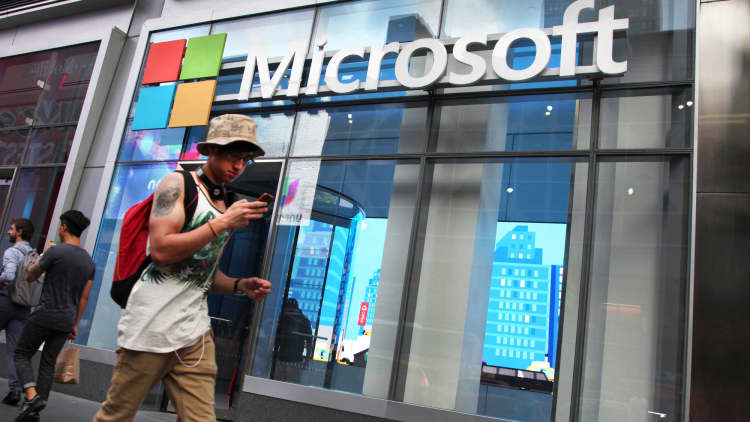Microsoft officially stopped supporting Windows 7 on Tuesday, which means it's not issuing any more security updates that will protect you from cyberattacks.
That means it's time to either buy a new computer or upgrade your system to Windows 10.
Microsoft says you should buy a new computer if yours is more than 3 years old, since Windows 10 might run slowly on older hardware and won't offer all the new features. If you have a computer that's still running Windows 7 but is still fairly new, then you should upgrade it.
Find out if you should upgrade
- Find out what version of Windows you're running by opening the Start menu, choosing "Settings," selecting "System" and then choosing "About." If you see Windows 7, it's time to upgrade.
- Next, you want to make sure that your computer is capable of running Windows 10. Microsoft has a short quiz on its website that will help you confirm that Windows 10 will run properly on your current computer. It will ask you how fast your computer feels now, how long the battery typically lasts, how many programs are able to run at the same time, and how important security is for you.
- Microsoft will warn you that Windows 10 won't improve speed, battery life or performance, so if any of those are current issues you should buy a new computer with Windows 10 and skip the upgrade, which might just make your computer more sluggish. Three Windows 10 laptops I'd recommend you check out are the Dell XPS 13 2-in-1, Lenovo Yoga C940 and 13-inch HP Spectre X360. All have the latest Intel chip and should last you a few years.
If you're happy with the speed and battery life of your current computer, though, you might be good to upgrade the computer you already have to Windows 10.
How to upgrade to Windows 10
- Buy Windows 10 from Microsoft's website. Windows 10 Home costs $139. That's the version most people need. (CNET says Microsoft is still letting people upgrade for free, even though the free upgrade program ended in 2016, which means you might be asked to pay. I recommend just buying it before you get started so you don't run into any problems.)
- Microsoft will send you a confirmation email after your purchase. In it is a 25-character code that looks like this, with numbers and letters: "Product Key: XXXXX-XXXXX-XXXXX-XXXXX-XXXXX." Keep that somewhere safe, because you'll need it soon.
- Now you're ready to upgrade. From your Windows 7 computer, visit Microsoft's website and download the Windows 10 installation media tool by selecting "Download tool now."
- Run the file after it downloads and agree to the terms and conditions.
- Select "Upgrade this PC now" and tap "Next."
- Windows 10 will download on your computer. It will take a long time — up to a couple of hours.
- Make sure you choose to "Keep personal files and apps" if you want to make sure everything transfers over properly.
- Tap "Install."
- Now let your computer do its thing. It could take longer than an hour depending on the speed of your current system, and will restart several times, so don't touch anything or turn it off.
- Enter in the product key if Microsoft asks for it.
That's it! Now you'll have Windows 10 and will receive frequent software updates and important security patches when Microsoft releases them.



